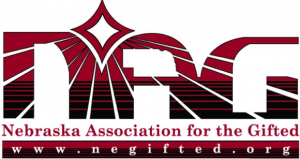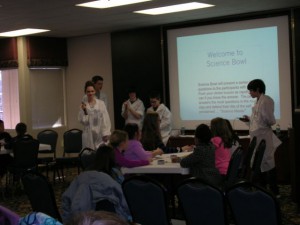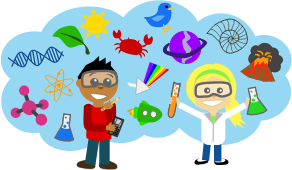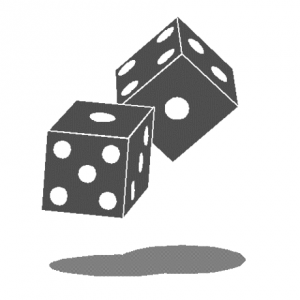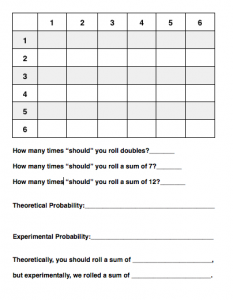I recently attended the Nebraska Association for the Gifted (NAG) spring conference and attended many beneficial sessions. One in particular provided a wealth of reading suggestions for students and the presenters gave me permission to share the lists. Enjoy!
Category Archives: Teachers
Science Olympiad Recap
Question: What do you get when you gather 110 students interested in science and allow them to think creatively, problem solve, experiment and collaborate?
Answer: Learning at its best!
The 2nd Annual WCS Elementary Science Olympiad was a huge success! Throughout the day, students participated in a variety of events that challenged their thinking.
The Zoo School facilitated a Wildlife Safari event where students practiced their observation and inference skills. The Barge Building event challenged students to create a foil structure that would float in water and support the most pennies. Mystery Powders had students identifying substances based on their reactions to different liquids. Other events included Rock Hound, Straw Tower, Mystery Boxes and Edible Vehicle.
It was a great day thanks to the organization of Sheree Person-Pandil and John Thomsen from ESU #3. We also had 9 amazing WHS students who shared their love of science by helping out at each event and facilitating a Science Bowl.
It’s so great to offer these types of opportunities to our students. Seeing the level of engagement and enthusiasm from the students is what makes our job so rewarding! Thank you to everyone involved in making this day a success! Click on the link below to watch a short iMovie trailer of the day.
Coding Resources
Coding, Programming, Computer Science, Oh My!
Have your students started coding yet? If not, they should…everyone else is doing it! 😉
For the first time in my teaching career, I have witnessed problem solving at a whole new level. When students are coding, I see engagement, problem solving, and grit. Coding has allowed me to introduce higher level math concepts to our youngest students…and they get it!
There are several free apps and websites that introduce students to the basics of coding. Many of these apps are also open-ended and allow students to be creative and design their own programs.
The wiki linked below is a work-in-progress. Please leave a comment and let me know your ideas/resources. Together we can give students an opportunity to learn the language of their future!
https://ey.westside66.org/wiki/pages/S2s452J6/Coding_Resources.html?target=
E/I Time 3rd Quarter
As leaders, why should we care about project-based learning? Because if we want graduates who are critical thinkers and problem solvers, we have to create learning environments in which students get to practice those skills in meaningful, authentic ways. Higher-level thinkers don’t just magically emerge from low-level thinking spaces. And that means we have to expect more from what we have traditionally called a learning ‘project.’
This quote was taken from a post on Scott McLeod’s Dangerously Irrelevant blog. As we continue to try and figure out the structure of E/I time at the elementary level, the EY team wants to continue to support classroom teachers in providing enrichment opportunities for all students. Much of our focus this year has been on providing Type I experiences which are designed to expose students to a wide variety of disciplines, topics, occupations, hobbies, persons, places, and events that would not be covered in a regular classroom (Renzulli). Our hope is that as students are exposed to Type I experiences, we can develop their interests and talents and move them towards Type II and III experiences.
Here are some 3rd Quarter E/I opportunities to consider:
-
A NEW Math Enrichment iBook that covers 3rd quarter math topics (Book 3) is available on our wiki. On the main page of the blog, scroll down to where it says “Click here to download the Grade 3, 4, 5 and 6 Math Enrichment iBook” and select the appropriate book. These books are full of opportunities for kids to dig a little deeper on a variety of math topics.NOTE: Students need to delete Book 1 and/or Book 2 from iBooks on their iPad before they can download the new one. Connect with your building’s EY Coordinator if you need help with this process.BONUS: During our PD day on Monday, January 19, Jenny Henningsen will be facilitating a session on how to use these iBooks with students. Please consider attending.
- The Science Olympiad Edible Car challenge could easily turn into a classroom E/I project. Although only 4th-6th grade students will be invited to attend the Science Olympiad, this challenge is doable for 3rd grade. The form can be downloaded here.
Another idea is for students to choose a design challenge from this site. They could complete a challenge and present it to the rest of the class.The 3rd Quarter focus for EY is science and students will be creating their own Super Science Show (modeled after Sylvia’s Super Awesome Maker Show). This could easily be something students team up to do in your classroom.
- If you’ve wanted to try a little coding with your students, Scratch Jr. is a great place to start with 3rd and 4th graders. There are currently 2 tutorial videos here and we will add a couple more project ideas in the next few days. Focusing on Scratch Jr. during E/I time could easily take 3 weeks (or longer).
-
The 2015 Nebraska Robotics Expo is on Saturday, February 21 at the Strategic Air and Space Museum. One of the competitions is Documentation where students come up with a problem and go through the Engineering Design Process to try and find a solution. Here is a great website with information and videos. If you want to have students compete in the documentation competition, print off an Engineering Notebook for each student.
-
On Tuesday, February 24, the EY Team will be hosting a Poetry Out Loud seminar for 3rd-6th grade students. We will have more information on our blog in the next couple weeks. In order to be invited to the seminar, students will have to write their own poem and perform it.One idea for E/I time is to gather various poems for the kids to read and perform. Students could use the Voice Recorder app on the iPad to record their readings. A Poetry Out-Loud event could be held in your own classroom where kids can drink hot cocoa and listen to each others’ performances.
- For the rest of the year, a weekly Math Minute challenge will be posted on our blog. Students can get to the challenges by going to the EY blog and clicking on Learning Opportunities->Math Minute.
We love to showcase student work on our Student Showcase Wiki. Please send student products (pictures, digital copies, etc.) to your building EY coordinator and we’ll get them posted!
Science Olympiad Jan. 27, 2015
Announcing the 2nd Annual Westside Elementary Science Olympiad!
On Tuesday, January 27, 2015, one-hundred students (Grades 4-6) will be invited to attend the Science Olympiad at the Westside Community Conference Center. All interested students should complete the edible vehicle brainstorm sheet. Completed worksheets must be turned into classroom teachers by January 14th in order to be considered to attend the Science Olympiad.
Entries will be evaluated on creativity and effort. Building the edible vehicle is not a requirement, however if a student is selected to attend, he/she has the option of building the vehicle and using it during an event at the Science Olympiad.
Check out the resources below for some ideas!
Clipart Source: https://openclipart.org/detail/195741/science-explosion-by-scout-195741
My Brain Hurts!
Remind students that they “drive” their own brains,
and teach them useful learning strategies.
Check out this article about teaching students about their brains.
Memory talks are remembering to remember.
Check out this video about strengthening a child’s brain.
The prefrontal cortex is one of the areas of the brain that changes
the most dramatically during adolescence.
Check out this video about the prefrontal cortex in adolescents.
Do you have any thoughts and/or resources related to brain development in children and adolescents? Feel free to leave a comment below and share!
Wonderopolis Symbaloo
Wonderopolis is a great site full of wonders! Click on the link below for a complete Wonderopolis project for your students.
https://ey.westside66.org/wiki/pages/N1t0u8/Wonderopolis_Symbaloo.html?target=
Probability
What is the probability of rolling of sum of 7 when rolling 2 dice?
One of my favorite things to do is take a math concept I used to teach my middle school students and see how various younger age groups handle it. More often than not, the instruction can be adjusted so that even the youngest students can learn what some might think is a difficult concept. One of those concepts is probability.
I created a “Dice Experiment” worksheet and conducted it with students in grades 1-6. Kids often associate experiments with science, so it was fun to do a math experiment. We rolled the dice 36 times and recorded the sum. With some groups I gave pairs of students the dice to roll on their own. With other groups, we collected the data as a class.
I loved telling kids that I used to teach this concept to middle school kids. Their faces lit up because they knew they were learning “big kid” math. 🙂
Here is a screenshot of the the experiment worksheet.
With all age groups, we talked about the parts of an experiment and how it’s important to keep track of data. We also talked about tables and charts and how they keep information organized and easy to read. We also talked about patterns and how they’re easier to see when the data is organized. We made lots of predictions and of course, talked about probability. Below you will find a link to a blank copy of the experiment along with an answer key. Feel free to use it and/or tweak it.
Please leave a comment and tell me how you teach probability. Or, give an example of how probability is used in everyday life.
Dice image taken from http://www.pdclipart.org
iBook Feedback
Thanks to all the teachers who submitted feedback on our Math Enrichment iBooks. Fifth grade teacher Meredith Chambers from Oakdale was the winner of a $10 gift card to First Watch. When asked how she is using the Math Enrichment iBooks, Meredith said:
I have a group of five students who passed 5th grade math as 4th graders. I still pretest them to see if they need any reteaching on these topics, but for the most part, after our whole-group lesson, they work with the iBooks for their guided math assignment.
We love getting feedback on the various resources we provide. Please leave a comment on our blog or email us directly with your feedback, input, and suggestions!
EY Symbaloo
The EY team created a Symbaloo this summer and so far, we’ve made it into all 3rd-6th grade classrooms to show students how to bookmark it on their iPads. We will continue to tweak it as the year goes on and appreciate your feedback and suggestions.
Here is a link with some videos and resources related to the EY Symbaloo: https://ey.westside66.org/wiki/pages/R1x994/Symbaloo.html?target=
